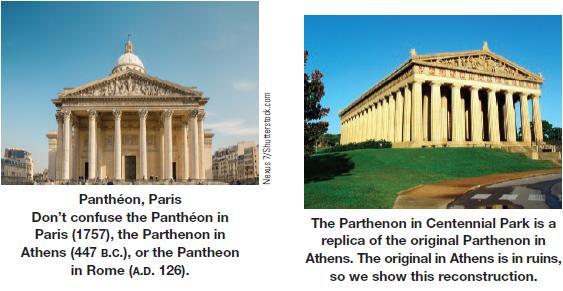In Example 2 of Section 7.6, we assumed the width of the Parthenon to be 101 ft
Question:
In Example 2 of Section 7.6, we assumed the width of the Parthenon to be 101 ft and found the height to be 62.4 ft (assuming the golden ratio). If you worked Problem 7 in Problem Set 7.6, you assumed the height to be 60 ft and the width to be 97 ft. Are the numbers from Example 2 and Problem 7 consistent? Can you draw any conclusions?
Data from Example 2
If the Parthenon is 101 feet wide, what is its height (to the nearest foot) if we assume the dimensions are in a golden ratio?

Data from Problem 7
If the Parthenon in Greece is 60 ft tall (at the apex) and 97 ft wide, find the ratio of width to height and compare it with π.
Fantastic news! We've Found the answer you've been seeking!
Step by Step Answer:
Related Book For 

Question Posted:





